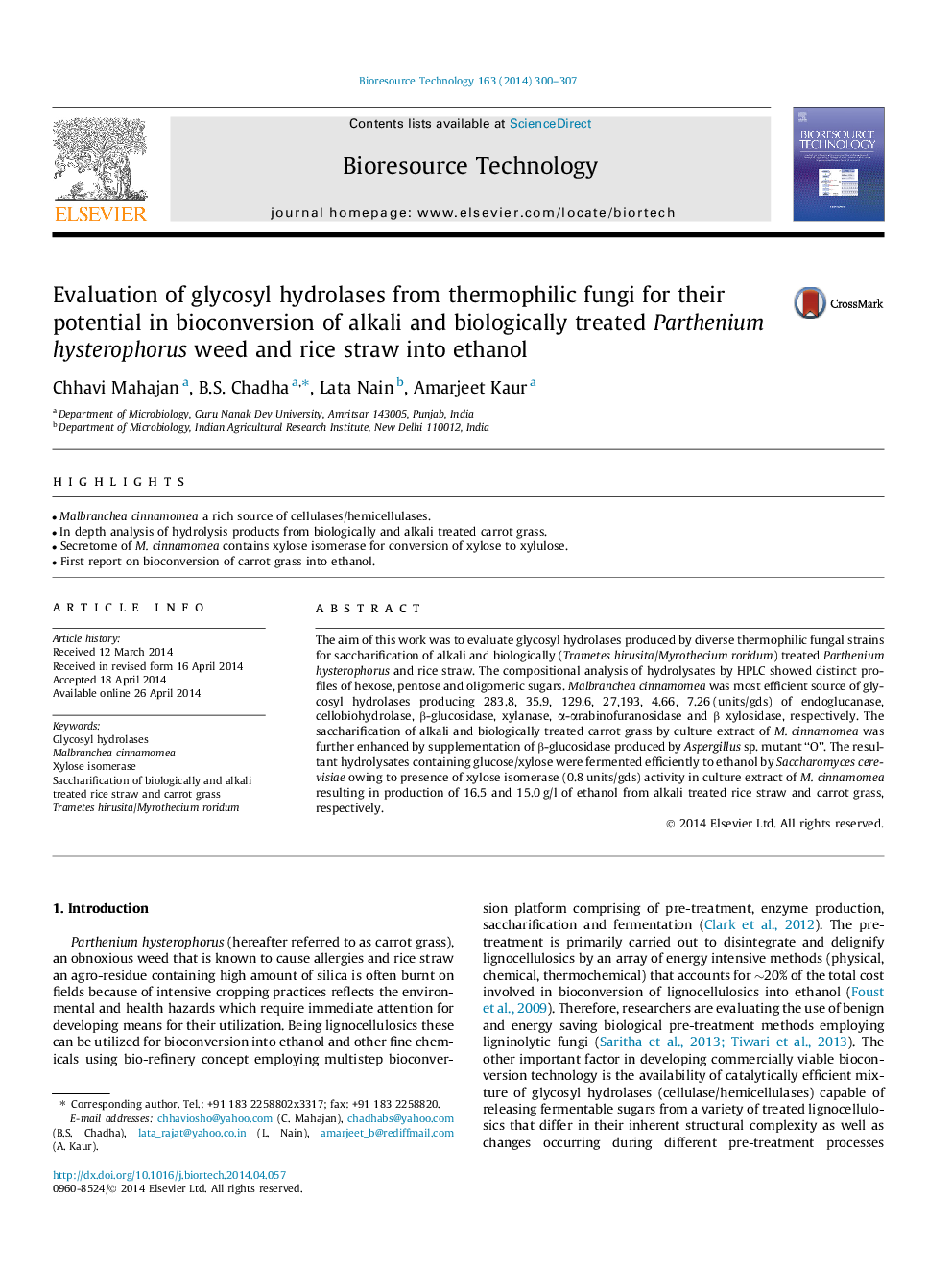| Article ID | Journal | Published Year | Pages | File Type |
|---|---|---|---|---|
| 680864 | Bioresource Technology | 2014 | 8 Pages |
•Malbranchea cinnamomea a rich source of cellulases/hemicellulases.•In depth analysis of hydrolysis products from biologically and alkali treated carrot grass.•Secretome of M. cinnamomea contains xylose isomerase for conversion of xylose to xylulose.•First report on bioconversion of carrot grass into ethanol.
The aim of this work was to evaluate glycosyl hydrolases produced by diverse thermophilic fungal strains for saccharification of alkali and biologically (Trametes hirusita/Myrothecium roridum) treated Parthenium hysterophorus and rice straw. The compositional analysis of hydrolysates by HPLC showed distinct profiles of hexose, pentose and oligomeric sugars. Malbranchea cinnamomea was most efficient source of glycosyl hydrolases producing 283.8, 35.9, 129.6, 27,193, 4.66, 7.26 (units/gds) of endoglucanase, cellobiohydrolase, β-glucosidase, xylanase, α-αrabinofuranosidase and β xylosidase, respectively. The saccharification of alkali and biologically treated carrot grass by culture extract of M. cinnamomea was further enhanced by supplementation of β-glucosidase produced by Aspergillus sp. mutant “O”. The resultant hydrolysates containing glucose/xylose were fermented efficiently to ethanol by Saccharomyces cerevisiae owing to presence of xylose isomerase (0.8 units/gds) activity in culture extract of M. cinnamomea resulting in production of 16.5 and 15.0 g/l of ethanol from alkali treated rice straw and carrot grass, respectively.
